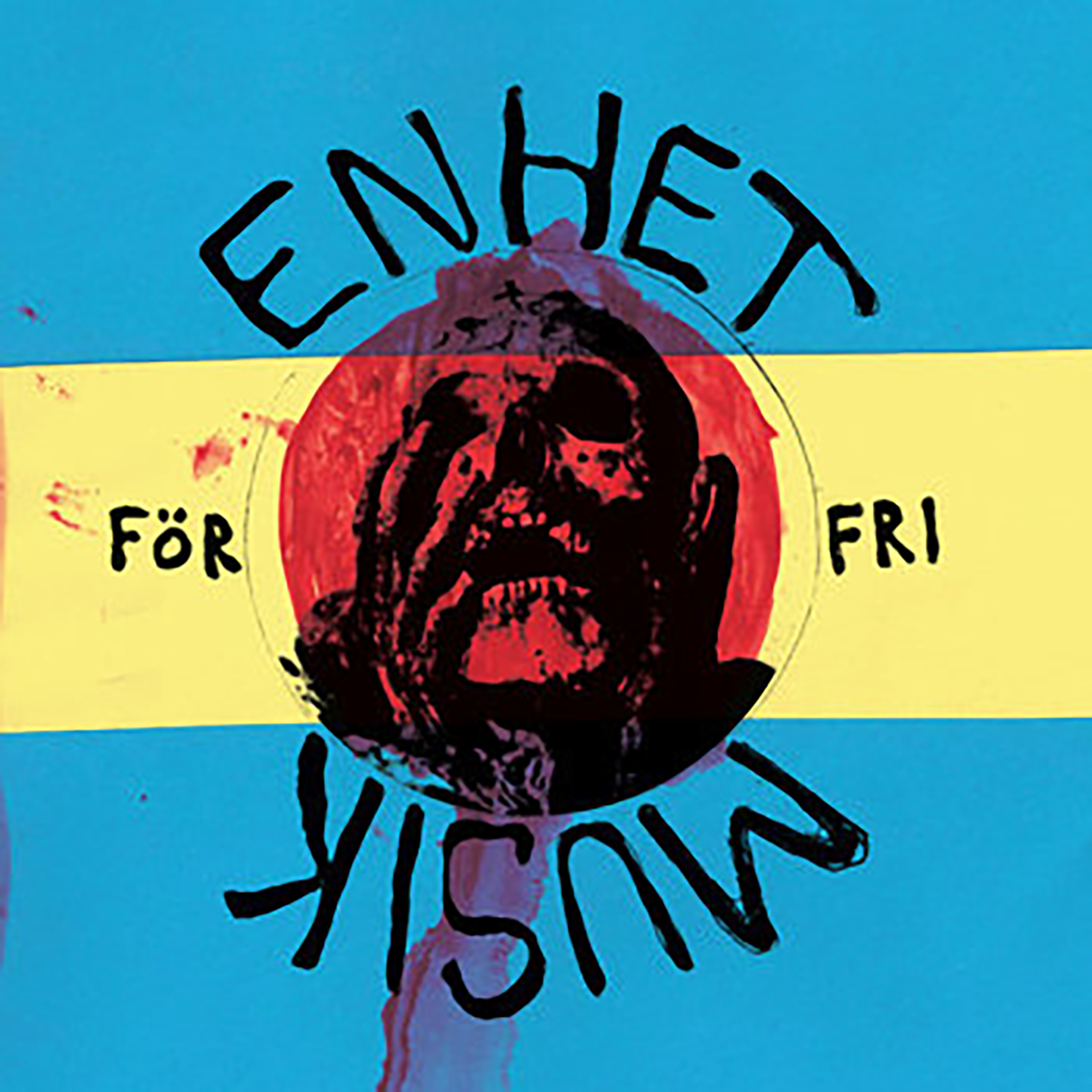Enhet F√∂r Fri Musik, "Det Finns Ett Hjärta Som F√∂r dig"
 Releases from this Swedish free-folk ensemble have historically not been particularly easy to obtain, as only their reissued debut (2015's Inom Dig, Inom Mig) has thus far seen wide distribution (and most are not digitally available either). Happily, their fifth album is now getting a well-deserved reissue too, as 2017's Det Finns Ett Hjärta Som För Dig ("There is a heart for you") will see a US physical release in December. I actually snapped up the original version when it came out on Omlott, as I love this band, but I have yet to hear the first three releases that followed Inom Dig. I am certainly curious to hear what directions they take, as the gulf between Enhet För Frei Musik's debut and this album is quite a large and unexpected one: Inom Dig had a disjointed, haunted, and almost Jandek-ian feel, whereas this latest opus blends simple, tender and melodic songs with wonderfully strange and hallucinatory collages. While both albums are excellent and unique in their own right, Det Finns Ett Hjärta Som För Dig sounds far more like the work of a project with a fully defined and realized identity.
Releases from this Swedish free-folk ensemble have historically not been particularly easy to obtain, as only their reissued debut (2015's Inom Dig, Inom Mig) has thus far seen wide distribution (and most are not digitally available either). Happily, their fifth album is now getting a well-deserved reissue too, as 2017's Det Finns Ett Hjärta Som För Dig ("There is a heart for you") will see a US physical release in December. I actually snapped up the original version when it came out on Omlott, as I love this band, but I have yet to hear the first three releases that followed Inom Dig. I am certainly curious to hear what directions they take, as the gulf between Enhet För Frei Musik's debut and this album is quite a large and unexpected one: Inom Dig had a disjointed, haunted, and almost Jandek-ian feel, whereas this latest opus blends simple, tender and melodic songs with wonderfully strange and hallucinatory collages. While both albums are excellent and unique in their own right, Det Finns Ett Hjärta Som För Dig sounds far more like the work of a project with a fully defined and realized identity.
All five members of Enhet För Frei Musik have been involved in an array of individual and collaborative projects in the Swedish underground over the years, but only Sofie Herner (Neutral) and Dan Johannson (Neutral, Sewer Election) are familiar to me.I suppose that is apt, as it is more or less impossible to tell what anyone besides Herner (vocals) contributes at any given moment or even if all five members are actively involved in every song.If they are, I am absolutely stumped about what role each artist could possibly be playing, as many pieces feature just one instrument.For example, the opening "När Ska Min Själ Finna Ro" ("When Will My Soul Find Peace") is built from just Herner's voice and a simple organ melody, while some other pieces feature just an acoustic guitar. A number of the band's members have noise and field recording backgrounds, however, so perhaps there is a team effort involved in making every piece sound like a wobbly and hissing boombox recording.It does not seem like that would require a lot of effort to achieve, so it is more likely that the band just sporadically convenes in various incarnations, then collaboratively shapes those disparate recordings into coherent albums with a unified aesthetic.I do like the murky, lo-fi quality of these recordings quite a lot though, as it suits the spontaneous, child-like nature of the songs.At its best, this album often feels like a fragmented and impressionist audio diary that is both nakedly honest and appealingly enigmatic.
For the most part, the most memorable pieces on the album tend to be the ones that prominently features Herner's disarmingly lovely and fragile-sounding vocals.There are only a handful of them though and some are quite short.Aside from the aforementioned opener, the band are at their most melodic and song-minded with "Det Finns Ett Hjärta" ("There is a Heart") and "Bara Min Egen" ("Just My Own"), both of which feel like heartfelt, guileless, and emotionally direct love songs.To a certain degree, that is not expected terrain for a band that contains so many noise and noise-adjacent artists, but it also makes a lot of sense in a perverse way: great noise artists attempt to cathartically express something raw, real, and undiluted by artifice, while pieces like this album's "Det Finns Ett Hjärta" achieve a more nuanced, vulnerable, and melodic equivalent to that.That said, Enhet För Frei Musik also prove themselves to be exceptionally adept at crafting gorgeous and unique sound collages.In "Variationer Av En Längtan Till Gud" ("Variations Of A Longing For God"), for example, a distorted and hiss-ravaged chorale abruptly transforms into a strangled, squirming saxophone and spoken-word interlude before blossoming into a final melodic coda.Like most pieces on the album, it feels more like a fragment or a vignette than a fully formed piece, but the first theme is an achingly lovely one that resembles a choir of angels faintly and fleetingly piercing through a caustic veil of noise and static.In between those two poles of collage and song, there are also an eclectic array of more sketchlike pieces that range from whistling in a sea of tape hiss ("Blomsteräng") to unaccompanied sax solos ("Solokvist") to something that sounds like a cross between a post-punk band and a snakecharmer ("Din Synd").  
The crown jewel of the album, however, is the enigmatic and haunting 10-minute closer "Fragment Av En Midsommarnattsdröm" ("Fragment of a Midsummer Night's Dream").Notably, it is one of the only songs on the album that stretches much beyond three minutes, as well as the only piece that feels like it has a purposefully structured and evolving arc.At its heart lies a sample of an impassioned speech that unfolds over a warm and twinkling bed of synths, yet it undergoes a series of intriguing transformations and intrusions that include a traditional folk ensemble and something that sounds like an Instagram influencer hawking sweaters.I dearly wish I understood Swedish, as it feels like there is something deeply poignant and profound at piece's center.Of course, it is also possible that the mystery of the sonorous monologue only enhances the piece's depth and power, as I quite like the feeling of a deep revelation elusively hidden within a disorienting swirl of unfamiliar languages, decontextualized fragments, temporal dislocation, and general mindfuckery.I suppose that is an apt summary of the album as a whole too, which is why Enhet För Frei Musik is such a compelling and refreshing band: I cannot pretend to fully understand their methods, but their strange mosaics have an uncanny way of amounting to an experience much greater than the sum of the individual parts. Moreover, they have found a way to reignite Sweden's rich tradition of iconic psych bands like Pärson Sound that feels like a new chapter rather than a mere homage, as this quintet have fully internalized that organic, unselfconscious free experimentation (rather than style) was the true soul of that illustrious milieu.
Samples can be found here.



